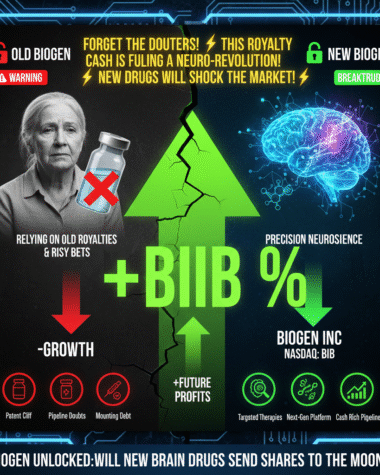Galectin Therapeutics Inc. (NASDAQ:GALT) is a clinical-stage biotechnology company headquartered in Norcross, Georgia, pioneering the development of novel therapies targeting galectin-3—a key protein that drives fibrosis, inflammation, and cancer progression. Founded in 2000, the company has built its reputation on advancing innovative treatments for severe liver diseases such as metabolic dysfunction-associated steatohepatitis (MASH) cirrhosis, an advanced stage of fatty liver disease that currently has no FDA-approved therapy. Galectin’s scientific foundation is based on decades of research demonstrating that galectin-3 plays a crucial role in fibrotic processes. In preclinical studies, animals with the galectin-3 gene “knocked out” failed to develop fibrosis, providing powerful validation for Galectin’s lead drug candidate, belapectin (GR-MD-02).
Belapectin, the company’s flagship compound, is a proprietary carbohydrate-based molecule designed to inhibit galectin-3 activity. The drug has shown encouraging potential to reduce portal hypertension and prevent the development of esophageal varices—life-threatening complications of cirrhosis. Unlike symptomatic treatments that only manage late-stage liver failure, belapectin aims to intervene earlier by targeting the biological root of fibrosis and inflammation, thereby modifying disease progression. Over the years, Galectin has successfully completed multiple early- and mid-stage clinical trials, including the NASH-FX and NASH-CX studies, both of which demonstrated belapectin’s safety and clinical benefit signals in patients with advanced liver fibrosis and compensated cirrhosis.
The company’s most ambitious endeavor is the NAVIGATE Phase 2b/3 trial, which enrolled over 350 patients with MASH cirrhosis to evaluate belapectin’s efficacy in preventing new varices—a major complication linked to portal hypertension. While the study narrowly missed its primary endpoint, results revealed a statistically significant 49% reduction in varices in the per-protocol population at the 2 mg/kg dose, with strong subgroup performance in the United States showing a 68% reduction. The data, presented at the European Association for the Study of the Liver (EASL) 2025 Congress, reinforced belapectin’s potential as a first-in-class antifibrotic therapy capable of delaying cirrhosis progression. Importantly, the drug was well tolerated, showing no safety concerns and consistent benefits across several biomarkers, including FibroScan® measurements of liver stiffness.
Galectin’s management, led by President and CEO Joel Lewis, remains deeply committed to advancing belapectin toward regulatory approval. The company’s largest shareholder and chairman, Richard E. Uihlein, has shown strong support by providing a $10 million credit line to fund operations through mid-2026, signaling investor confidence in Galectin’s long-term prospects. The company’s leadership continues to explore strategic partnerships and collaborations with larger pharmaceutical players to accelerate belapectin’s commercialization, while preparing for a critical upcoming FDA meeting that could define the regulatory pathway for its approval.
In addition to its core liver disease program, Galectin Therapeutics is expanding the potential applications of its galectin-3 inhibition platform. Belapectin is being investigated in combination with immunotherapies such as Merck’s Keytruda (pembrolizumab) for oncology indications, including head and neck cancer. This diversification strategy highlights the company’s ambition to leverage its proprietary technology beyond liver diseases and into broader therapeutic areas where fibrosis and immune dysregulation play a key role.
Despite facing financial constraints typical of small-cap biotechs, Galectin continues to capture attention from investors and analysts due to its strong scientific rationale, compelling clinical signals, and focus on one of medicine’s greatest unmet needs. The global MASH cirrhosis market is estimated to exceed $18 billion annually, with roughly 5 million patients worldwide lacking effective treatment options. If belapectin secures regulatory approval or strategic partnership support, Galectin Therapeutics could transition from a high-risk developmental stage company to a transformative leader in liver health innovation, setting a new standard for antifibrotic therapy in the years to come.
A Near Miss in a Pivotal Trial
In late 2024, Galectin reported that the NAVIGATE trial narrowly missed its primary endpoint, which was the prevention of new esophageal varices. The company’s stock dropped sharply from around $3 to $1 per share. However, within the per-protocol population, belapectin achieved statistically significant reductions of up to 48.9% in varices formation at the 2 mg/kg dose compared to placebo, with no safety concerns and a clean adverse event profile. In the broader intent-to-treat population, results showed a 43.2% reduction, although not reaching statistical significance—an outcome the company described as “close but no cigar.”
Further analysis revealed that the U.S. subgroup performed exceptionally well, showing a 68% reduction (p=0.02) in varices development at the 2 mg/kg dose, a result that reignited investor interest. The findings were presented at the European Association for the Study of the Liver (EASL) 2025 Congress, highlighting meaningful improvements in FibroScan® scores—a key biomarker for liver stiffness—and stronger results in patients who received the drug beyond 18 months. These outcomes suggest that belapectin may slow or even reverse disease progression with long-term use.

CHECK THIS OUT: Corcept (CORT) Skyrockets 1,534% in 10 Years and Immuneering (IMRX) Reports 86% 9-Month Survival in Pancreatic Cancer.
Management’s Renewed Confidence and Insider Backing
Galectin’s leadership, headed by CEO Joel Lewis, remains steadfast in its belief that belapectin can become the first approved therapy for MASH cirrhosis. In support of this mission, Chairman Richard E. Uihlein, one of the company’s largest individual shareholders, extended a $10 million credit line to sustain operations through mid-2026. This vote of confidence helped fuel a sharp rebound in Galectin’s share price, which surged from around $1.30 in June to over $4 by October 2025.
Despite limited funding, management continues to refine its regulatory and partnership strategies. An upcoming FDA meeting expected later this year could serve as a pivotal catalyst, potentially clarifying the path toward a New Drug Application (NDA) or identifying requirements for a confirmatory trial. A positive FDA reception could also attract a strategic partner or acquirer—an essential move given Galectin’s cash balance of only $13.8 million as of Q2 2025 and a quarterly net loss of $7.6 million.
Strategic Opportunity Amid Unmet Medical Need
The potential reward for success is massive. Galectin estimates that the compensated MASH cirrhosis market could exceed $18 billion annually, covering around 5 million patients globally. Unlike Madrigal Pharmaceuticals’ Rezdiffra (resmetirom)—which targets earlier-stage (F2–F3) MASH—belapectin focuses on F4-stage cirrhosis, where current treatment options are virtually nonexistent. Moreover, belapectin could complement the use of GLP-1 drugs like Eli Lilly’s tirzepatide or Novo Nordisk’s semaglutide, which together earned over $8 billion in quarterly revenue, by addressing the fibrotic progression that those drugs don’t directly treat.
Analysts note that Madrigal’s $7 billion market cap, driven by its Rezdiffra launch, underscores the valuation potential of companies developing therapies in the liver disease space. If belapectin achieves approval or attracts a strong commercial partner, Galectin’s market value could rise several-fold, mirroring Madrigal’s trajectory after its own late-stage success.
Financial Strain, Regulatory Hope, and the Path Forward
Still, Galectin’s story remains one of high risk and high potential. The company must secure additional funding or a partnership to advance belapectin toward commercialization. Its ongoing financial strain limits flexibility, but the insider support and the FDA meeting later this year keep the bullish narrative alive. Investors are closely watching whether regulators will recognize the clinical and biomarker evidence as sufficient for conditional approval or require another pivotal study.
From a scientific standpoint, belapectin continues to stand out due to its unique mechanism targeting galectin-3, a central player in fibrosis and inflammation. Unlike symptomatic treatments, belapectin aims to modify the disease course, potentially delaying liver failure, transplant, or death. This makes it not only a potential first-in-class therapy but also an M&A target for larger pharma companies seeking entry into the liver fibrosis market.
Conclusion: A Catalyst-Driven Biotech with Binary Risk
Galectin Therapeutics has reached an inflection point. The NAVIGATE trial’s near-miss did not end the story—it revealed a deeper signal that may yet unlock FDA approval or a lucrative partnership. The company’s largest investor continues to bankroll operations, its management remains confident, and clinical data show a reproducible benefit in the most urgent and underserved patient population.
While dilution and operational risk persist, the FDA’s upcoming decision and ongoing partnership talks could determine whether Galectin rises as a late-blooming success story or succumbs to financial exhaustion. For risk-tolerant investors, GALT represents a speculative but potentially explosive biotech play, one that could mirror Madrigal’s comeback if belapectin secures regulatory or strategic validation in the months ahead.
READ ALSO: Tiziana (TLSA) Surges 143% in 2025 and Immuneering (IMRX) Reports 86% 9-Month Survival in Pancreatic Cancer.








